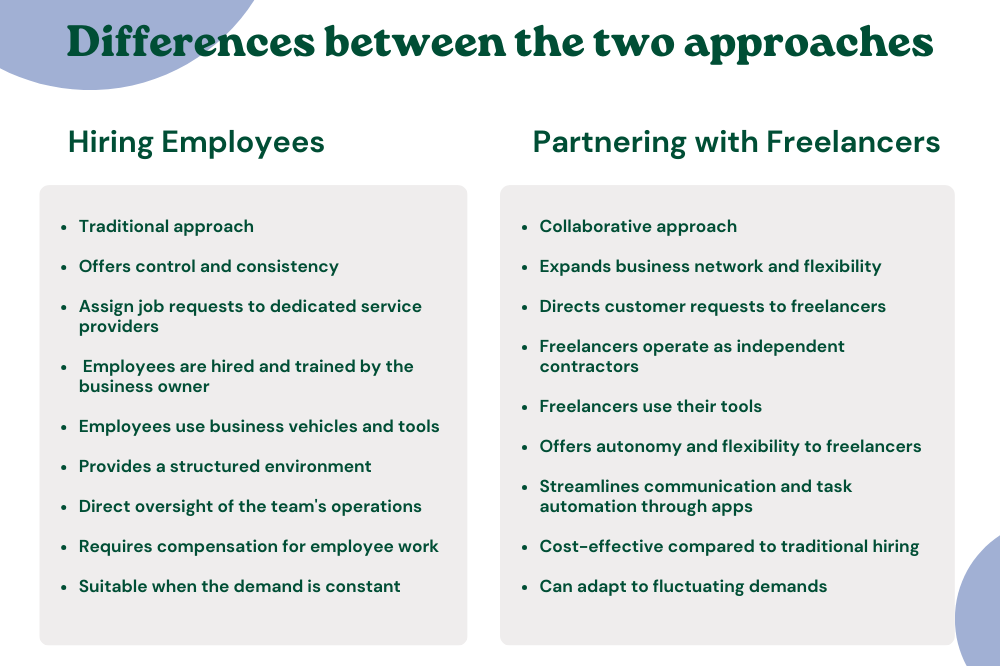
How To Start A Roadside Assistance Business In 2024?
Explore starting a roadside assistance business with our guide. Learn the industry scope, essential steps, and strategies for success in 2024.
Imagine this: It's a chilly winter evening, and you are stranded on a deserted highway with a flat tyre. As the hours pass, you begin to panic, but just then a roadside assistance truck pulls up beside you, and the driver helps with a warm smile.
Moments like these highlight how invaluable roadside assistance is to drivers everywhere, doesn't it? Have you ever actually experienced a similar situation on the road, desperately in need of help?
If so, you're not alone. Many people, on a daily basis, find themselves in similar situations. but have you ever thought of what it would be like to be on the other side of the equation, where you help people in need while building a successful business out of it?
Welcome to our guide to entering the roadside assistance industry. In this blog, you'll explore:
- What is the scope of starting a roadside assistance business is.
- The essential steps to start a roadside assistance business.
- Effective strategies for promoting your roadside assistance business.
So, whether you're a budding entrepreneur looking for a new opportunity or someone with a passion for helping others, grab a toolkit and join us as we delve into how you can carve out your niche in the roadside assistance scene in 2024.
Scope of Roadside Assistance Business
Millions of vehicles ply the roads of the United States every day, and each day, many of these vehicle owners face sudden troubles with their vehicles.
This is exactly why the need for roadside assistance is higher than ever.
This demand for roadside assistance is observed in the recent industry reports, which predict that the global roadside assistance market will hit $35.73 billion by 2030, reflecting a steady annual growth rate of 5.36%.
Through this study, you know that, if you want to enter the roadside assistance industry, now is a better time than ever.
A Step-by-Step Guide to Starting a Roadside Assistance Business
Roadside assistance businesses generally thrive in both bustling cities and remote regions because vehicles fill the streets in cities, while help can be scarce in remote areas. The need for assistance is constant in both, and they can present a unique set of challenges.
so, if you're ready to face the pros and cons of starting a roadside assistance business, these 8 steps will guide you into the industry.
- Perform market research.
- Create a business plan.
- Register your business.
- Get financing.
- Obtain permits.
- Get insurance.
- Build your team.
- Develop a business app.
1. Conduct Your Market Research
The first step you need to take to start your roadside assistance business is market research. It will help you understand the needs of your customers.
You can do this by analysing your local demographics and assessing your competitor's services and pricing.
Use surveys or interviews with local customers, or conduct your own survey, to find out what they want and come up with an approach to the business that will satisfy them.
2. Prepare A Business Plan
In this next step, what you have to do is condense your market research into a focused business plan.
Use this plan to define your services, target audience, and competitive strengths.
Detail your finances, covering startup expenses, revenue forecasts, and funding requirements, and list your marketing strategies to promote your business.
3. Register Your Business
Once you have written your business plan, you'll be ready to commit to the industry. Now you can make it official!
Pick a name and business structure and register your business. The available business structures for registering your roadside assistance business include:
- Sole proprietorship
- General partnership
- Limited liability company
Create a business bank account to separate your business finances and register for local and state taxes.
Make sure that you meet all the legal requirements for operating the business in your chosen location. You can consult business regulators and other industry experts in your area to know the relevant details.
4. Secure Sufficient Finance
After you register the business, you need to find the funds to support it.
The funds you need for this mostly depend on the scale of your business and the business model you choose. In any case, you'll need money for things like insurance and permits.
Here are some funding options you can consider for your roadside assistance business:
- Small business loans
- Equipment Financing
- Government grants and subsidies
- Financial assistance programmes
- Personal savings
As you look into the funding options, you have to keep in mind that, every option has its own set of benefits and risks. So, It's a good idea to talk to a business finance expert to help you pick the right one.
5. Apply For Roadside Assistance Business Licenses
The permits you need to run a roadside assistance business depend on three things: how you set up your business, what services you offer, and where your business is located. So, you have to do your research to find the proper licence requirements.
Here's a list of some common licenses you might need for your roadside assistance business:
- Commercial Driver's License (CDL)
- Tow Truck Operator License
- Occupational Safety and Health Administration (OSHA) Compliance
- Environmental Permits
You can check your state's official website to see what permits you need. This way, your business follows all the local regulations.
6. Get Business Insurance
Unexpected things happen all the time, even in carefully run businesses. Insurance is like a safety net that helps protect your business from falling apart when bad stuff like accidents or damage occurs.
It's like having a shield for your business and its employees and assets, so you're financially covered when facing tough situations.
Typical insurance requirements for businesses might include:
- Liability insurance
- Commercial auto insurance
- Cargo insurance (to transport vehicles)
Your insurance needs differ from one business to another based on different factors. So, it's smart to talk to an insurance agent who knows their stuff before you buy insurance.
7. Build Your Team
The roadside assistance industry is all about offering quick help when people need it most. That's why it's important to have a team of skilled and reliable service providers who know their jobs.
Now, you might wonder, how do you build such a team? Well, there are two ways: you can hire and train employees, which is traditional, or you could partner with freelancers.
Experienced roadside assistance pros often team up with roadside assistance businesses to get more job requests than they would on their own. They're like independent helpers instead of being your regular employees.
So, what's the difference between the two approaches? Well, let’s break it down for you:

Does the table help clear things up?
One thing to remember is that it's easy to assign tasks to employees directly, but it might not be as simple with freelancers because they like flexibility. That's why we suggest thinking about making apps for your business that can automate such tasks.
Apps can send job requests to freelancers automatically, give them a choice to work and make communication easier for them, which makes working together smoother and more efficient.
What can I choose? Hiring employees or freelancers
Well, both are good options, and what you choose is entirely up to you, but if you're feeling uncertain, don't worry! Just consider a few key questions:
- How much money can you afford?
- How much control do you want?
- How flexible do you need to be?
Take your time to think it through. You'll find the option that fits best with your goals and resources. Now, moving to the next step.
8. Create Roadside Assistance Business Apps
In the last part, we talked about how handy apps are when you're teaming up with freelancers. But here's the thing: having your own business app can be just as useful, even if you work with your crew.
When you have a business app, it can make many things easy for you. It can handle job requests, interact with customers, keep track of earnings, and more.
So, while an app isn’t absolutely necessary for your business, having one can really make a difference, especially in the roadside assistance industry.
So, if you're thinking about creating an app for your business but feel unsure of how to proceed, don't worry! We’ve covered that too, so just keep reading.
When it comes to creating your app, you've got two paths to choose from: custom development or ready-made solutions.
Custom development
The first option is custom development. This means building an app from scratch and tailoring every feature to fit your business needs.
With this method, you'll work closely with developers to ensure every detail aligns with your vision.
Readymade solution
On the other hand, there's the option of launching your app using a ready-made solution. This involves purchasing a pre-made app that's specifically designed for your industry.
With this option, you already have the features you need for your business app, so you simply white-label it and launch it. Boom, you have your own business app.
These solutions also help you launch your app quickly and cost-effectively, so you can get your app up and running faster without breaking the bank.
And now, you know your options. But deciding isn't always easy with just a quick look. So, do some research, learn more about building from scratch and ready-made solutions, and compare them to see which one works best for you.
And in case you end up choosing a ready-made solution, why not check out our ready-made solution for roadside assistance? Wooberly RoadAssist.
- Wooberly RoadAssist has easy-to-use apps for customers, which help them find services, contact providers, track jobs, and pay.
- Service providers can use the app to manage requests, check job details, get paid, and more.
- We also have an admin panel to help you manage your business easily and effectively.
We've been helping people launch their digital platforms in the on-demand industry for quite some time, and we believe we can help you too with your new venture.
Now enough about us; let's get back on the road.
Strategies to Market Your Roadside Assistance Business
Okay, now that we've got all the necessary steps covered, you're all set to jump into the industry! But here's the deal: just starting up won't bring in a crowd.
Nope, you've got to get out there, spread the word about your brand, and connect with the right people. Ready to roll up your sleeves and get noticed?
Alright, let's delve into some smart marketing strategies for your roadside assistance business!
- Traditional marketing
- Digital marketing
- Partnerships and affiliations
- Referral programmes
1. Traditional advertising
Traditional advertising is an effective way to promote your business among the local population. You can place your business information directly in the hands of your potential customers by distributing flyers and brochures.
Local newspaper ads can help you to effectively reach the targeted local demographic as well. This makes your roadside assistance services more familiar and accessible to your local audience.
2. Digital marketing
Ensure your business stands out in online searches through effective digital marketing strategies.
Start by optimising your online presence across various platforms. Make sure all your business information is accurate and includes local keywords to enhance visibility.
Encourage customers to leave reviews to boost your online reputation and visibility.
3. Partnerships and affiliations
Build partnerships with local businesses, repair shops, and insurance companies for mutual promotion and credibility.
4. Referral programmes
Encourage existing customers to refer others through referral programmes, offering discounts or rewards for successful referrals.
After you start the business, you need to continuously monitor the effectiveness of your marketing strategies.
Pay attention to customer feedback, as it provides valuable insights into aspects you may have overlooked. Act on this feedback to enhance customer convenience and strengthen your market presence
Signing off,
As we reach the end of the blog, we hope you've found our guide helpful and inspiring. Whether you're eager to start your own business or just want to lend a helping hand, remember that success is possible with the right approach.
As you set out on your venture, remember to stay connected with your community, always provide excellent customer support, and keep improving your services. With hard work and determination, you can build a roadside assistance business that truly makes a difference.
Thank you for joining us on this ride, and best of luck with your endeavours. Until next time, drive safe and keep helping others along the way.






